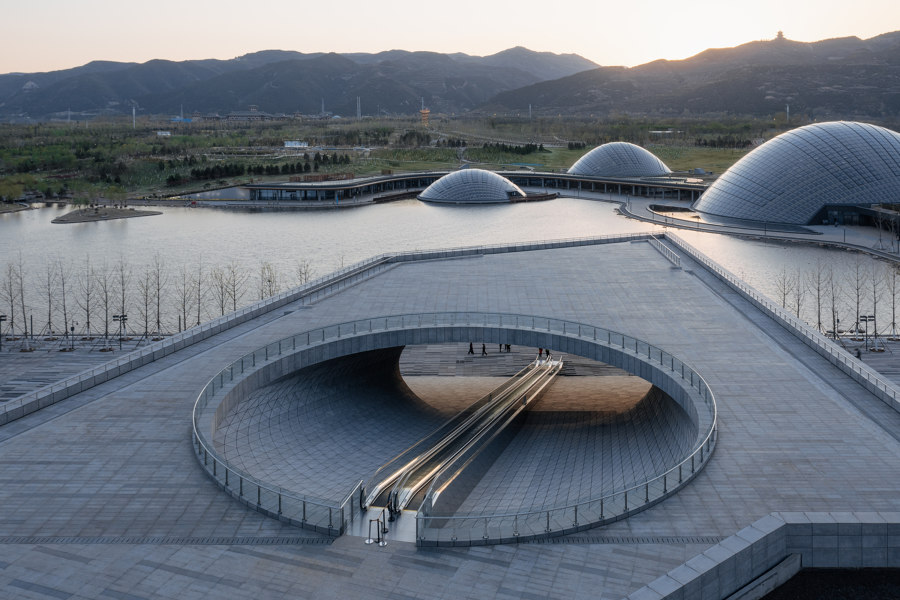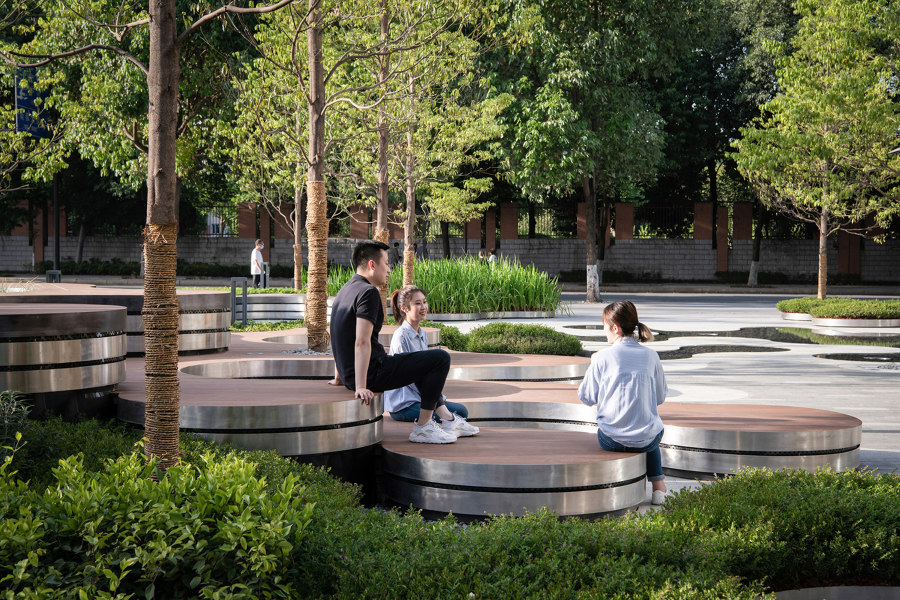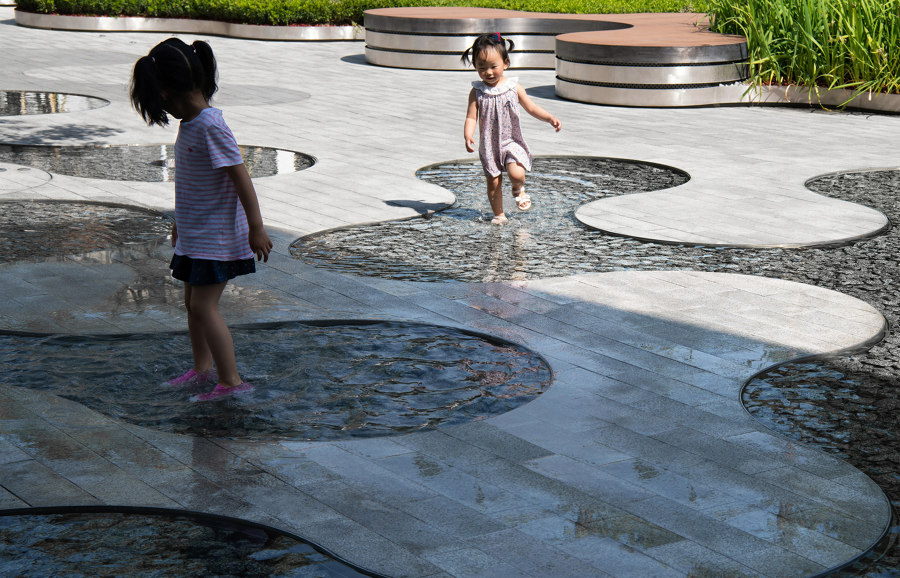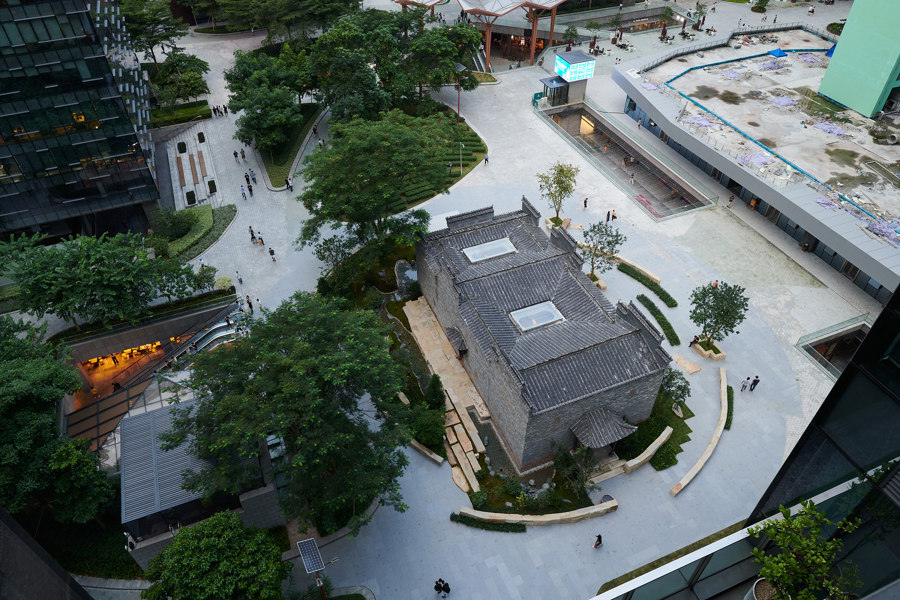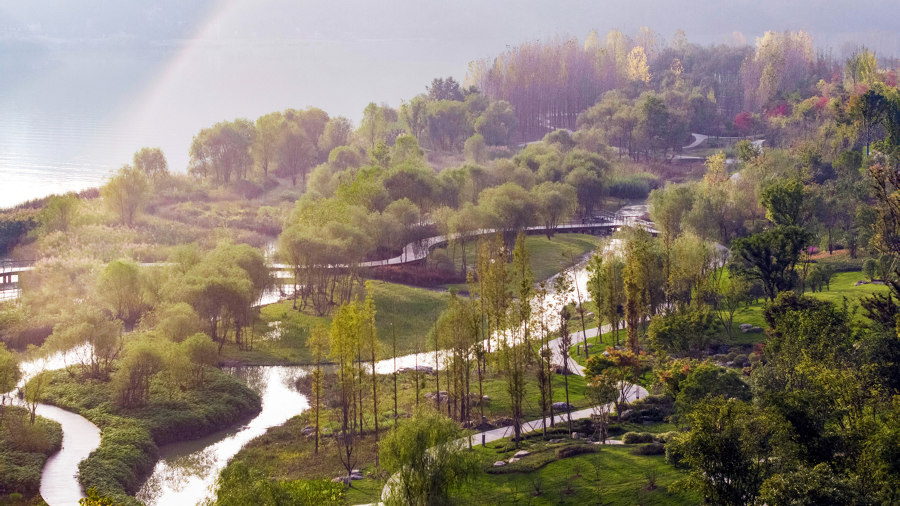New environmental landscapes in urban Chinese parks
Texto por James Wormald
24.08.22
China halts the harmful urban sprawl of its rapidly growing economy by ring-fencing the climate and transforming urban areas into new environmental landscapes.
The Hyperlane Urban Gallery creates a circular-themed promenade with connected paving, shallow water, shaded seating and shrubberies. Photo: Bing Lu
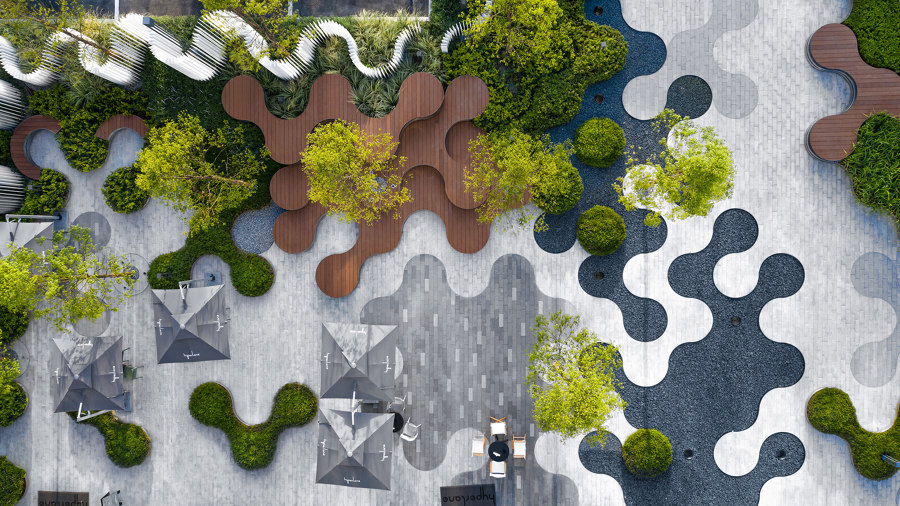
The Hyperlane Urban Gallery creates a circular-themed promenade with connected paving, shallow water, shaded seating and shrubberies. Photo: Bing Lu
×China is the world’s largest single polluter, consuming more coal than the rest of the world combined. But given its size, is the country’s western image as one of the main climate offenders justified? Turn the stats around, and they become decidedly more favourable. Driven by economic factors to improve energy security and dominate the emerging renewable energy market, China has, in fact, been the world’s leading investor in renewable energy since 2013. Still growing fast, however, and with a lot of space to grow into, how does China level its unstoppable infrastructure and urban development with a climate policy slowly growing in ambition? These Chinese parks turn urban environments into sustainable, functional and bio-diverse natural landscapes.
Taiyuan botanical gardens, nature museum and research centre add three glass- and timber-domed pods and various angular architectural features to the site of an old coal mine. Photos: CreatAR
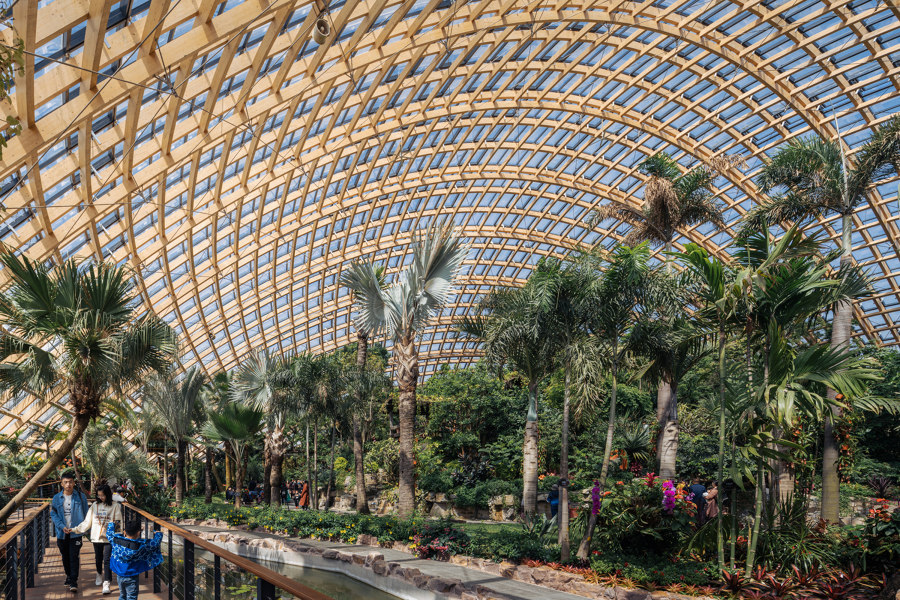
Taiyuan botanical gardens, nature museum and research centre add three glass- and timber-domed pods and various angular architectural features to the site of an old coal mine. Photos: CreatAR
×Taiyuan Botanical Garden by Delugan Meissl Associated Architects in Taiyuan
Transforming a coal mine into botanical gardens and an environmental research and education centre is a sign of China’s changing environmental policy. ‘Detailed knowledge of local climatic conditions, thermal demands inside the structures and the structural efficiency and availability of suitable constructional resources were key parameters for successfully minimising the ecological footprint,’ say the architects, of the sustainability of the three glass dome greenhouses themselves.
Transforming a coal mine into botanical gardens is a sign of China’s changing environmental policy
After passing through the entrance building and nature museum, visitors have the option to experience the rest of the moon-like landscape from a cantilevered viewing platform, or descend towards the rest of the site. When the three botanical garden greenhouses gradually drop into view while descending the steps, entering the platform’s oval opening feels like alighting a spaceship preparing to visit new worlds. With the environment inside the glass and timber domes teaching visitors about the importance and details of natural ecosystems, perhaps it is.
Hyperlane combines social stepped seating (top), cooling and playful water features (middle) and a tricky non-linear walking route (bottom), encouraging walkers to connect with nature. Photos: Bing Lu
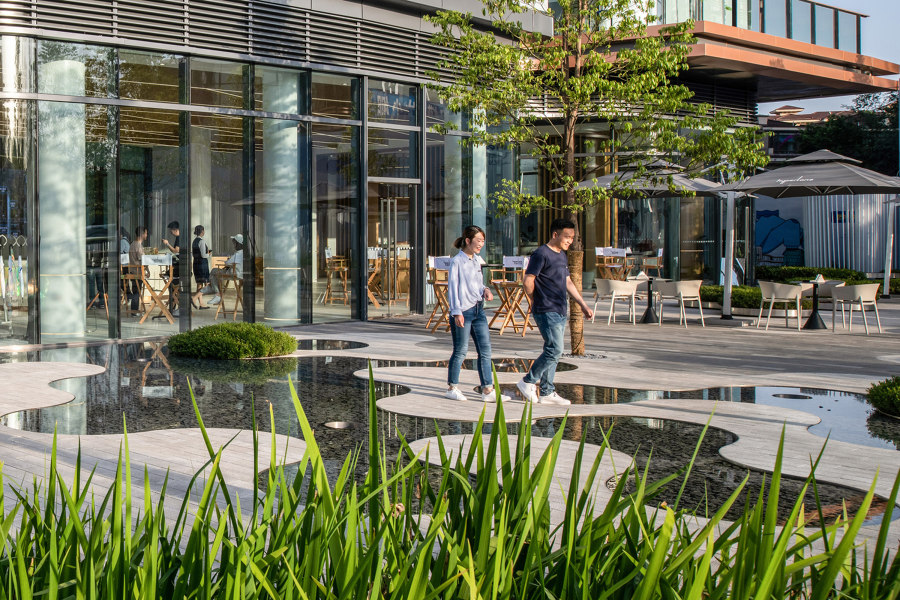
Hyperlane combines social stepped seating (top), cooling and playful water features (middle) and a tricky non-linear walking route (bottom), encouraging walkers to connect with nature. Photos: Bing Lu
×Hyperlane Linear Sky Park by ASPECT Studios in Chengdu
‘Leading the movement of a new consciousness within the Chinese development industry,’ say landscape architects ASPECT Studios, ‘Hyperlane understands that long-term social, environmental and economic success isn’t achieved by short-term commercial gains, but with attention to socially and environmentally orientated systems.’ In the first of a multi-stage development, Hyperlane’s Urban Gallery is a community of circular-themed public spaces including a pedestrian promenade, shallow water ‘carpet’, shaded seating crescents, connective stepped seating areas and dotted plant life, all coming together to encourage students and faculty members of the Sichuan Conservatory of Music University to take the scenic route between accommodation and campus.
On a formally derelict site, ‘the vision for the project was to bring nature and natural systems into the heart of the design, encouraging insects, birds and wildlife into an urban corridor.’ states ASPECT. With all stages complete, the project will form a multi-storey, barrier-free 2.4km-long sky park, cultural space and community pathway.
Moving 300-year-old Dai Fu Di into an urban plaza, helpfully connects urbanites to nature, history and culture, without leaving the city walls. Photos: Hao Chen
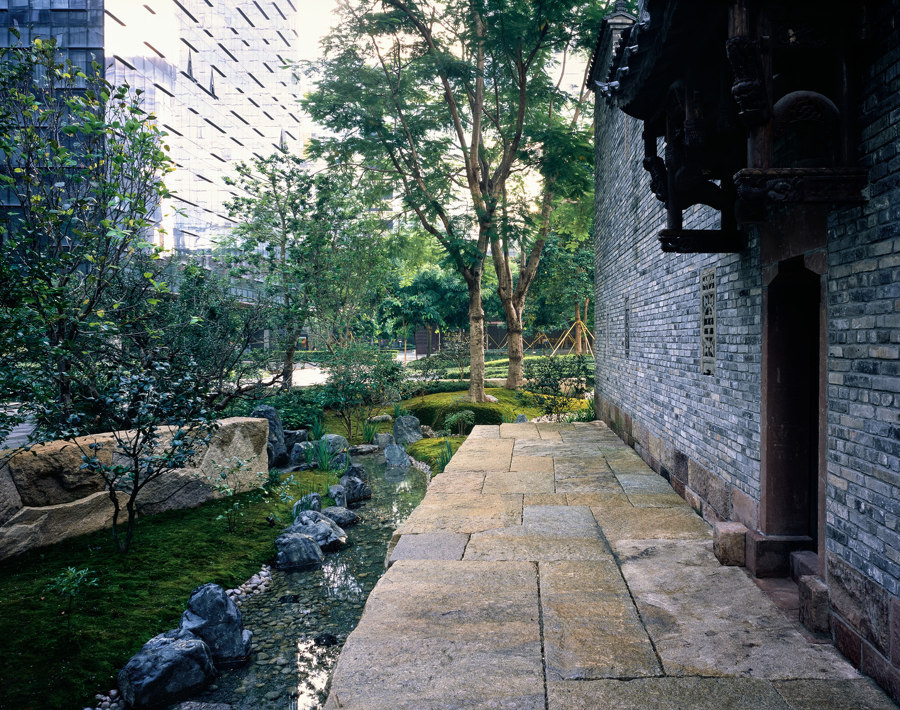
Moving 300-year-old Dai Fu Di into an urban plaza, helpfully connects urbanites to nature, history and culture, without leaving the city walls. Photos: Hao Chen
×Adjoin Garden by July Cooperative Company in Shenzhen
Aiming to improve the urban community’s interactive relationship with history and culture, landscape architects July Cooperative Company brought it closer, carefully deconstructing, restoring and reassembling Dai Fu Di — a building dating back more than 300 years to the Qing Dynasty — into the centre of a multifunctional urban plaza.
A ripple motif surrounding the building brought an amphitheatric feeling of performance and display
‘When designing the landscape, we have to consider the differences in the atmosphere between ancient buildings and the modern commercial environment,’ explained the architects. In order to reflect this atmospheric change, a ripple motif was introduced to the natural landscaping surrounding the building exterior, including rock gardens and watercourses, giving the garden an amphitheatric feeling of performance and display.
Whether you see Adjoin Garden as environmental and historic preservation or desecration, it certainly makes a statement about how future urban communities can continue to exist within an accessible, preserved cultural framework.
Yujidao Park preserves Nanchong’s natural wetlands, welcoming the public with bridges and paths connecting modern and traditional architecture. Photos: Shining Laboratory (top, bottom), He Shu (middle)
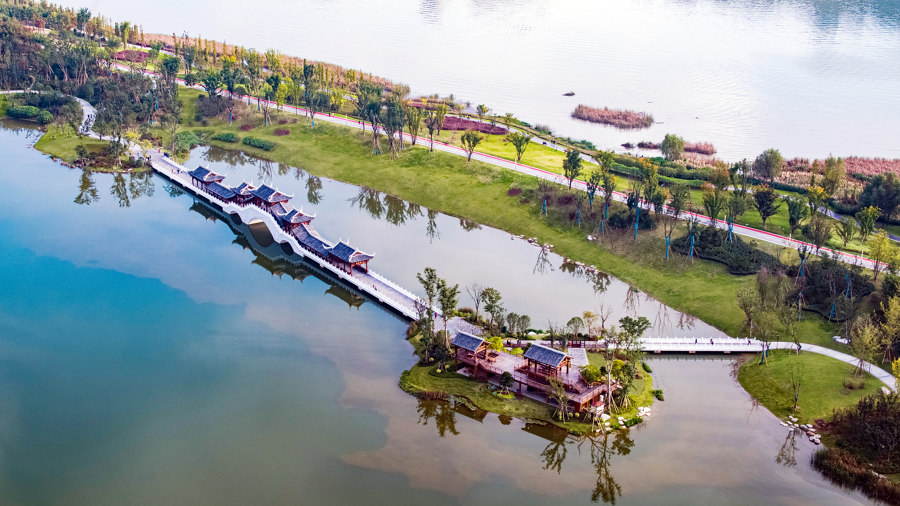
Yujidao Park preserves Nanchong’s natural wetlands, welcoming the public with bridges and paths connecting modern and traditional architecture. Photos: Shining Laboratory (top, bottom), He Shu (middle)
×Yujidao Park by BLVD International in Nanchong
Nanchong is a city developing quickly around the wide Jialing River in East Sichuan. Unlike other river-fed conurbations, however, developers wanted to ensure the city’s inhabitants were able to enjoy continued access to the city’s natural waterside activities and lifestyle.
‘In the principle of respecting nature and advancing into the future, the design puts forward the concept of the Jiang Pearl.’ explain architects BLVD International, ‘creating a closer and intuitive experience,’ by reintegrating the nourishing aspect of the river into the land itself. Yujidao Park mingles serpentine paths of water – and accompanying bridges and pathways above – through forested islands, to both promote and protect the city’s cultural heritage, the community’s experience of the natural waterside environment and its bio-diversity.
© Architonic

